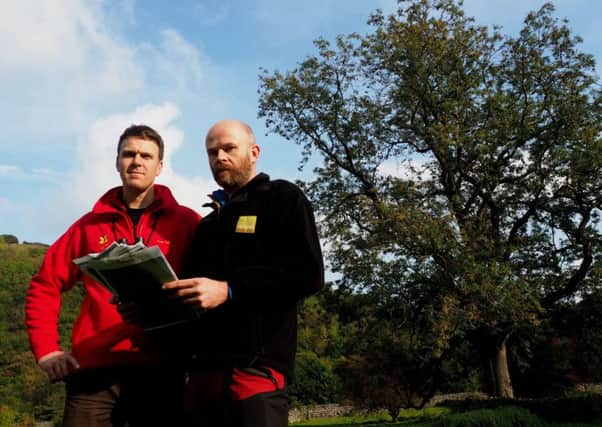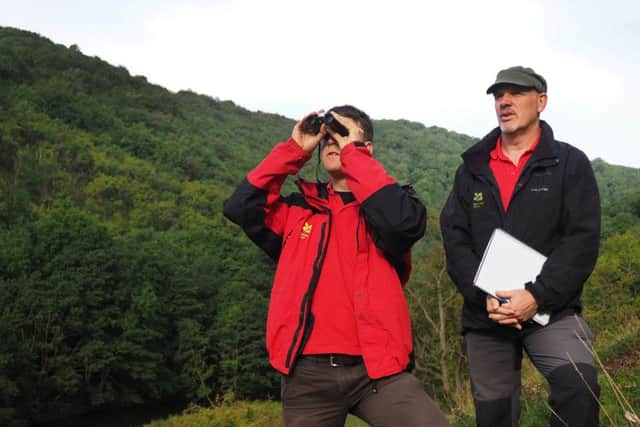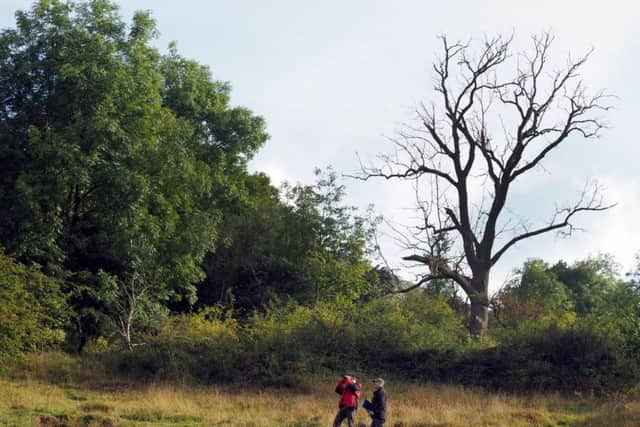Peak District conservationists join the battle to avoid '˜ash Armageddon'


Unsurprisingly, he says, because the spores that cause the disease are carried by the wind.
“We felt it was inevitable, because the White Peak is an ash landscape. Now we need to manage it and mitigate for it.”
Advertisement
Hide AdAdvertisement
Hide AdThe disease originated in the far east, where native ash species have co-evolved with the Hymenoscyphus fraxineus fungus which causes ash dieback, and can survive its attacks, whereas European ash trees seem to have little defence.


The rapid spread of ash dieback throughout Europe since its first outbreak in 1992 has led to predictions of an ‘ash Armageddon’ with most of Britain’s 100 million plus ash trees dead or dying within a few years.
Agencies like the National Trust, Natural England, The Forestry Commission and the Peak District National Park Authority are working together to monitor the spread of the disease in steep limestone valleys like Dovedale, Lathkill Dale, Monsal Dale and Monks Dale.
“Some places in Europe have seen more than 90 per cent of the ash trees infected, and if that happened in our ash-dominated woodlands, they could stop functioning as woodland ecosystems with all that implies for other woodland species,” said Luke Barley.
Advertisement
Hide AdAdvertisement
Hide AdAsh is a ‘pioneer’ species, whose seedlings grow quickly in cleared and open ground, so the predominance of ash in the White Peak’s woodlands is a result of many hundreds of years of woodland clearances for farming, quarrying and mining.


But there are still some secluded ravine woodlands that evaded human interference, like Matlock Wood in Matlock Bath, which include trees like wych elm, yew and lime as well as ash, and Joe Alsop, from Natural England, said restoring species that would have grown around the White Peak in the past would be good for biodiversity.
“Matlock Wood gives us a snapshot of where we could be, and maybe shows how many ravine woodlands would have looked in the past,” he said.
As well as a monitoring programme in 100 small patches of the Peak District to check the progress of ash and other species, conservationists will be actively cutting down some trees to give space to older ash which could be more tolerant, and to allow other native trees to gain a foothold.
Advertisement
Hide AdAdvertisement
Hide AdLuke and colleagues are also looking for funding to plant species that would have grown in the ravines long ago, like hazel, rock whitebeam, lime and wych elm.


There are some encouraging signs that Britain’s ash trees may be more tolerant than continental European variants, and maybe an ‘ash Armageddon’ can be averted here.
But the White Peak’s ash trees will soon face another challenge, as conservationists monitor the spread of the Asian emerald ash borer beetle - whose larvae burrow into ash trees and kill them - which arrived a few years ago in Moscow.
“It is a call to action,” added Luke. “We can’t stop ash dieback, all we can do is try and manage these woodlands so what’s important about them continues.”